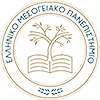Module Title: Advanced Topics in Educational Technology
Teaching hours:
Credits: 7,5
Semester: 2nd
Instructor: Papadakis Nikolaos Associate Professor
Course Objectives
The main purpose of the course is the understanding how digital technology is used in formal and informal education in terms of usability. Students are expected to acquire an overall view of today’s eLearning, taking into account the ease of use and effectiveness of the tools, services and infrastructures offered in the educational context. The course material is divided into 2 main sections. The first section is about educational technology, where topics on eLearning and teaching with the help of modern technology, contemporary learning theories, the development of interactive educational material, eLearning infrastructures and on-line educational services are presented and discussed by systematically analyzing the models of integration of new technologies into education, The second section presents the basic principles and practical knowledge for designing, developing and evaluating human-computer interfaces in terms of usability, i.e. the ability of a system to function efficiently and effectively while providing subjective satisfaction to its users (ISO 9241). The main issues discussed in this section involve core usability engineering concepts, types and methods of usability evaluation, software development methodologies in the light of usability and special usability issues, with emphasis on how to apply usability in the design and evaluation of e-learning systems.
Indicative Course Syllabus
1st SECTION:
- Introduction to educational technology: Terminology, the emergence of education’s transformation, models of integration of new technologies in education, changes in stakeholders’ roles, and ways of teaching and tracking.
- Digital educational content: The role of digital content in new learning processes, learning objects, attributes, development of interactive educational content, authoring tools.
- Learning theories: Basic learning theories and teaching practices. How new technologies are influencing education. New learning theories and teaching approaches based on digital technologies.
- Digital teaching and learning environments: Learning Management Systems (LMS), Open Educational Resources Reserves (OER), Massive Open Online Courses (MOOC), selection and evaluation criteria, collaborative environments, social networking infrastructures. Next Generation Digital Learning Environments (NGDLE).
- Standards and specifications in educational technology related to interoperability, system management, content re-use, access and security.
2nd SECTION:
- Core usability engineering concepts: Usability and User-Centered Design. Usability Guidelines, Principles and Heuristics. Levels of Usability Analysis. Measuring Aspects of Usability (Proficiency, Learnability, Efficiency, Memorability, Error Handling, User Satisfaction)
- Psychological concepts: Cognitive Psychology and Information Processing, Dual Processor Metaphor (Norman’s Human Action Cycle), Attention and Memory
- Types of usability evaluation: User-centered Evaluation (Usability Experiments, Usability Testing, card sorting, eye tracking, quantitative surveys…). Expert-based Evaluation (Usability inspection methods, Heuristic Evaluation / Cognitive Walkthrough). Review-based evaluation. Model-based Evaluation. Engineering Models of Human-Computer Interaction, GOMS Models (CMN, KLM, CPM, NGOMSL)
- Software development methodologies in the light of usability: Software Prototyping. Dimensions and classification of prototypes Prototyping tools. Agile Software Development Methods (agile manifesto)
- Special usability issues, with emphasis to the design, development and evaluation of e-learning systems.
Bibliography
- Anderson, T. (Ed.). (2008). The theory and practice of online learning. Athabasca University Press.
- Bates, A. (2015).Teaching in a Digital Age. Guidelines for designing teaching and learning for a digital age. Canada: Tony Bates Associates Ltd.
- Veletsianos, G. (2010). Emerging Technologies in Distance Education. Canada: Athabasca University Press.
- [4] Vaughan, N. D., Cleveland-Innes, M., & Garrison, D. R. (2013). Teaching in blended learning environments: Creating and sustaining communities of inquiry. Athabasca University Press.
- Beetham, H., & Sharpe, R. (Eds.). (2013). Re-thinking pedagogy for a digital age: Designing for 21st century learning. Routledge.
- Garrison, D. R. (2017). E-Learning in the 21st Century: A Community of Inquiry Framework for Research and Practice (3rd Edition). London: Routledge/Taylor and Francis.
- Steve Krug Don’t Make Me Think, (2014) Revisited: a Common Sense Approach to Web Usability. [Berkeley, Calif.] :New Riders, 2014.
- Vijay Kumar, (2012)101 Design Methods: A Structured Approach for Driving Innovation in Your Organization ISBN: 978-1-118-08346-8
- Jakob Nielsen Usability Engineering”, published by Morgan Kaufmann, San Francisco, 1994.
- Alan Cooper, RobertReimann, David Cronin, (2007) About Face 3: The Essentials of Interaction Design”, John Wiley & Sons Publishing,
- Jacob Nielsen, (2000) “Designing web usability – The practice of simplicity”, New Riders Publishing
- Don. Norman (1998) “The Invisible Computer”, , Cambridge, MA: MIT PressISBN 0-262-14065-9
